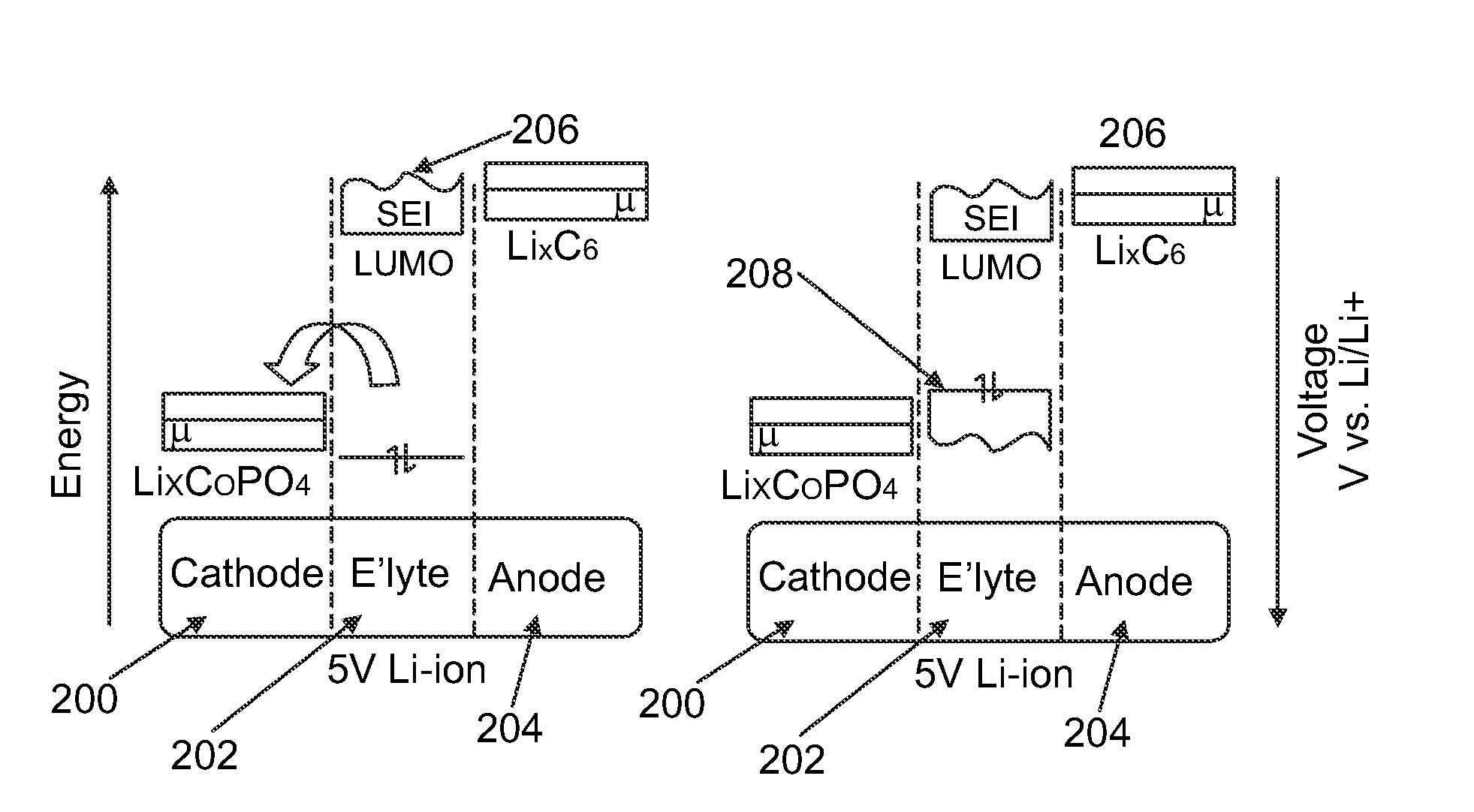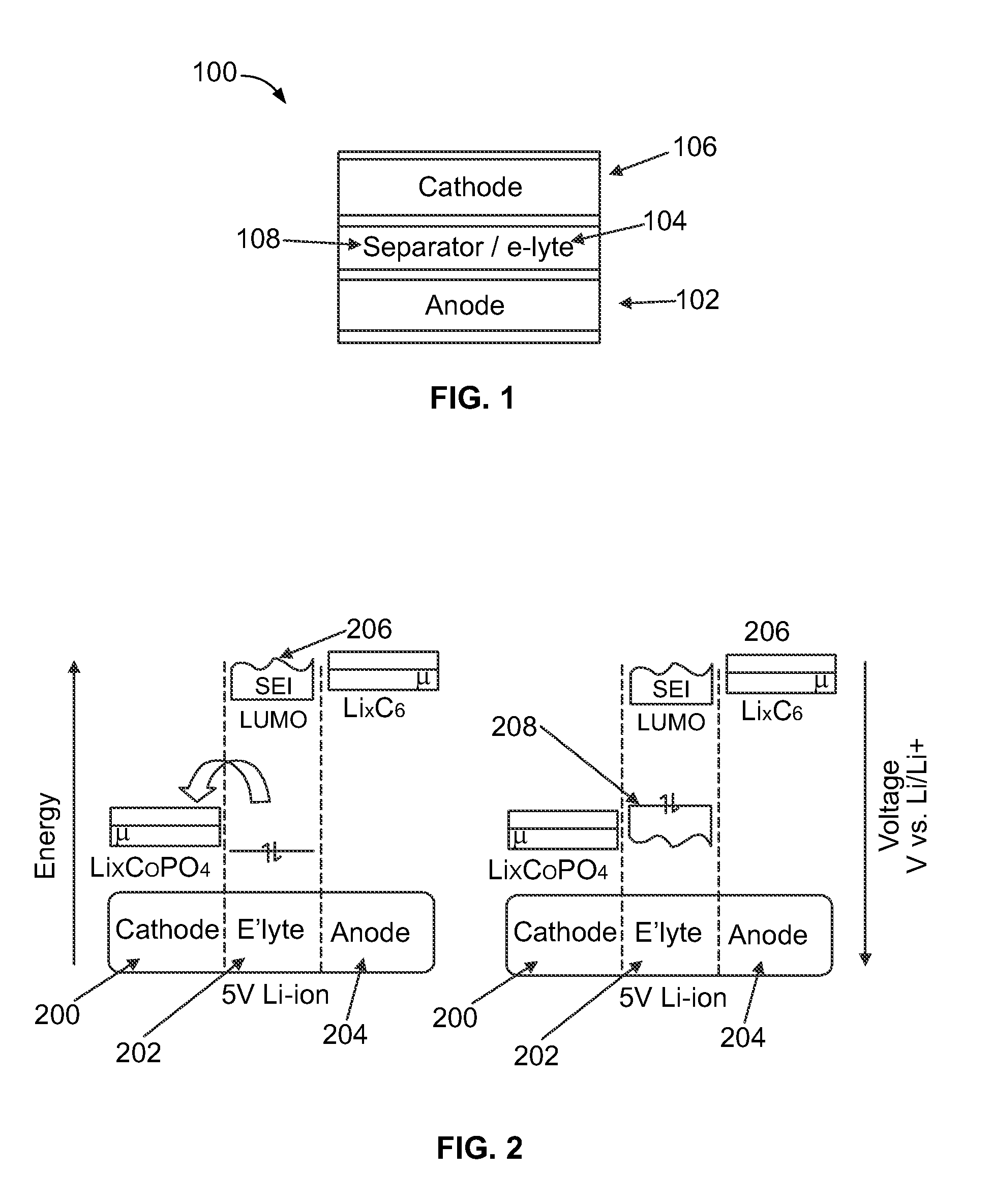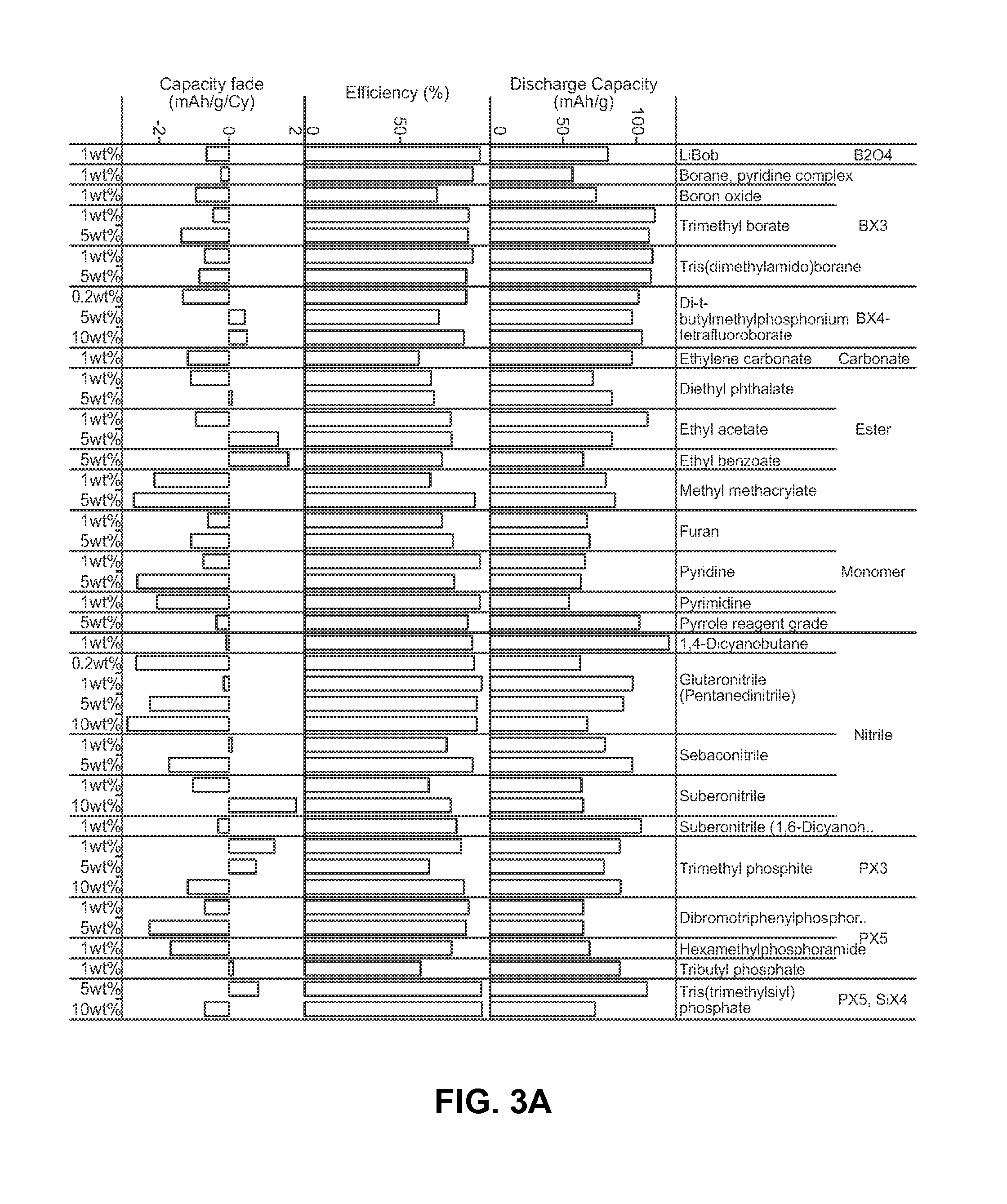Materials for Battery Electrolytes and Methods for Use
a battery electrolyte and material technology, applied in the field of battery electrolyte, can solve the problems of severe electrolyte decomposition in the battery, affecting both the performance and safety of the battery, and the inability to operate at high voltage. to achieve the effect of promoting the electrochemical stability of the electroly
- Summary
- Abstract
- Description
- Claims
- Application Information
AI Technical Summary
Benefits of technology
Problems solved by technology
Method used
Image
Examples
example 1
Methodology for Formation and Characterization of Battery Cells Including Stabilizing Additives
[0165]Battery cells were formed in a high purity argon filled glove box (M-Braun, O2 and humidity content4 cathode material (Li(1-x): Co(1-y-z):Fey:Tiz:(PO4)(1-a)) were mixed in 1-methyl-2-pyrrolidinone (Sigma Aldrich), and the resulting slurry was deposited on an aluminum current collector and dried to form a composite cathode film. A lithium or graphite anode was used. In case of a graphite anode, a graphitic carbon (mesocarbon microbeads or MCMB) was mixed with poly(vinylidene fluoride) (Sigma Aldrich), carbon black (Super P Li, TIMCAL), using 1-methyl-2-pyrrolidinone (Sigma Aldrich) as a solvent, and the resulting slurry was deposited on a copper current collector and dried to form a composite anode film. Each battery cell including the composite cathode film, a Millipore glass fiber or a polypropylene separator, and the lithium or graphite anode was assembled in a coin cell-type assem...
example 2
Characterization of Battery Cells Including Stabilizing Additives
[0167]Performance characteristics were measured for various stabilizing additives dispersed in a conventional electrolyte (ethylene carbonate, dimethyl carbonate, and 1M LiPF6). Each test battery cell and each control battery cell included a doped LiCoPO4 cathode material (Li(1-x):Co(1-y-z):Fey:Tiz:(PO4)(1-a)) and a lithium anode.
[0168]FIGS. 4 through 10 compare capacity retention with and without furan, suberonitrile, lanthanum trifluoride (or lanthanum(III) fluoride), tris(dimethylamido)borane, di-t-butylmethylphosphonium tetrafluoro borate, trimethyl borate, and sulfolane as a stabilizing additive compound over several cycles, expressed in terms of a percentage of an initial specific capacity upon discharge retained at a particular cycle. As can be appreciated, the inclusion of the stabilizing additives improved cycle life.
example 3
Methodology for Formation and Characterization of Battery Cells Including Stabilizing Additives
[0169]In another set of tests, performance characteristics were measured for a test battery cells including stabilizing additive compounds dispersed in a conventional electrolyte (ethylene carbonate, ethyl methyl carbonate, and 1M LiPF6) and for a control battery cell including the conventional electrolyte but without the stabilizing additive (labeled as “EC:EMC(1:2), 1M LiPF6”). Each of the test battery cell and the control battery cell included a LiMn2O4 cathode material. After a formation charge and discharge at room temperature, the battery cell was cycled nine times between about 3 V to about 4.5 V with the charge being at about 1C and a constant voltage period up to C / 50 and discharge at 1C. Residual current was measured in a cycle from about 3 V to about 4.9 V when the cell was held at about 4.9 V (and 5.1 V in some cases) for 5 hours at about 50° C. The inclusion of the stabilizing...
PUM
| Property | Measurement | Unit |
|---|---|---|
| Fraction | aaaaa | aaaaa |
| Fraction | aaaaa | aaaaa |
| Fraction | aaaaa | aaaaa |
Abstract
Description
Claims
Application Information
 Login to View More
Login to View More - R&D
- Intellectual Property
- Life Sciences
- Materials
- Tech Scout
- Unparalleled Data Quality
- Higher Quality Content
- 60% Fewer Hallucinations
Browse by: Latest US Patents, China's latest patents, Technical Efficacy Thesaurus, Application Domain, Technology Topic, Popular Technical Reports.
© 2025 PatSnap. All rights reserved.Legal|Privacy policy|Modern Slavery Act Transparency Statement|Sitemap|About US| Contact US: help@patsnap.com



